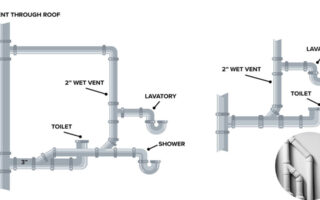When you’re diving into the world of real estate, you’ll come across a term that might leave you scratching your head: “house under agreement.” But don’t worry, we’re here to break it down for you. Understanding what it means when a house is under agreement is crucial for both buyers and sellers. It’s like knowing the secret handshake to the real estate club!
What Does It Mean When a House Is Under Agreement?

Let’s start with the basics. When a house is under agreement, it means the seller has accepted a buyer’s offer, and both parties have signed a purchase and sale agreement. This agreement outlines the terms and conditions of the sale, including the price, closing date, and any contingencies.
You might also hear this status referred to as “under contract” or “pending sale.” While these terms are often used interchangeably, they can have slightly different meanings depending on the region and the specific sales circumstances.
So, why does this status matter? Well, once a house is under agreement, it’s no longer considered an active listing. This means that the seller can’t accept other offers, and the buyer has a legal right to purchase the property, subject to the terms of the agreement.
Legal Implications of a House Being Under Agreement
When a house is under agreement, both the buyer and the seller have legal obligations. The buyer must follow through with the purchase, assuming all contingencies are met, while the seller must transfer the property to the buyer at closing.
If either party fails to uphold their end of the house agreement, they could face legal consequences. For example, if the buyer backs out without a valid reason, they may lose their earnest money deposit. On the other hand, if the seller tries to back out, the buyer could sue for specific performance, forcing the seller to complete the sale.
How a House Becomes Under Agreement
Now that we know what it means when a house is under agreement, let’s take a look at how a property reaches this status. It’s like following a recipe for your favorite dish – each step is crucial to getting the desired result.
Step-by-Step Process from Listing to Offer Acceptance
- Listing the Property: The seller works with a real estate agent to list the property, setting a price and providing details about the home.
- Marketing and Showings: The agent markets the property and schedules showings for interested buyers.
- Receiving Offers: Potential buyers submit purchase offers, often through their own real estate agents.
- Negotiating and Counteroffers: The seller reviews the offers and may negotiate with buyers, sending counteroffers back and forth until an agreement is reached.
- Accepting an Offer: Once the seller accepts an offer, both parties sign a purchase and sale agreement, putting the house under agreement.
Role of Buyer and Seller in Reaching an Agreement
Both the buyer and seller play crucial roles in reaching an agreement. The buyer must submit a compelling offer that meets the seller’s expectations, while the seller must be willing to negotiate and consider the buyer’s needs.
It’s like a dance – both parties need to move in sync to create a successful outcome. Working with experienced real estate agents can help guide both the buyer and seller through this process.
Typical Contingencies Included in the Agreement
When a house is under agreement, the purchase and sale agreement often includes contingencies that must be met before the sale can be finalized. These contingencies protect both the buyer and seller and can consist of:
- Financing Contingency: The buyer must secure financing to purchase the property.
- Inspection Contingency: The buyer has the right to have the property inspected and may request repairs or a price reduction based on the findings.
- Appraisal Contingency: The property must appraise for at least the purchase price to ensure the buyer isn’t overpaying.
Timeline Expectations
The timeline for a house to go from under agreement to closing can vary depending on the specific circumstances of the sale. It takes about 30-60 days from the time the house deal is signed to the closing date.
However, this timeline can be affected by factors such as transaction complexity, the number of contingencies, and the parties’ efficiency. Both buyers and sellers need to have realistic expectations and to communicate openly throughout the process.
Importance of the “Under Agreement” Status for Buyers
If you’re a buyer, understanding the “under agreement” status is crucial. It’s like having a roadmap to guide you through the home-buying process.
What Buyers Should Know and Expect
When a house you’re interested in goes under agreement, it means that another buyer has submitted an offer that the seller has accepted. However, this doesn’t necessarily mean that the deal is done and dusted.
As a buyer, you should know that the house property is no longer actively on the market, but it may still be possible to submit a backup offer or be placed on a waiting list. It’s essential to stay in close communication with your real estate agent to stay informed about the property’s status.
Rights and Obligations of Buyers
When a house is under agreement, the buyer who submitted the accepted offer has certain rights and obligations. They have the right to purchase the property, subject to the terms of the agreement, and must fulfill their responsibilities, including securing financing and completing any necessary inspections.
If you’re a buyer who has submitted a backup offer, you don’t have the same rights as the primary buyer. However, if the primary buyer’s deal falls through, you may have the opportunity to step in and purchase the property.
How Buyers Can Prepare for Closing
If you’re the buyer whose offer was accepted, there are several steps you can take to prepare for closing:
- Secure Financing: Work with your lender to finalize your mortgage and ensure that you have the funds necessary to complete the purchase.
- Complete Inspections: Hire a professional home inspector to assess the property’s condition and identify potential issues.
- Review Closing Documents: Carefully review all closing documents, including the settlement statement and title report, to ensure that everything is in order.
Potential Risks and How to Mitigate Them
When a house is under agreement, there are several potential risks that buyers should be aware of:
- Financing Falling Through: If the buyer is unable to secure financing, the deal may fall apart. To mitigate this risk, buyers should work closely with their lender and have a backup plan in place.
- Inspection Issues: If the home inspection reveals significant problems with the property, the buyer may need to request repairs or a price reduction. To mitigate this risk, buyers should carefully review the inspection report and negotiate with the seller as needed.
- Appraisal Coming in Low: If the house property appraises for less than the purchase price, the buyer may need to come up with additional funds or renegotiate the price. To mitigate this risk, buyers should work with their lender to understand the appraisal process and be prepared to negotiate if necessary.
Importance of the “Under Agreement” Status for Sellers

If you’re a seller, the “under agreement” status is a significant milestone in the home-selling process. It’s like reaching the summit of a mountain – you’re not quite at the finish line, but you’re well on your way.
Why Sellers Should Take the “Under Agreement” Status Seriously
When your house goes under agreement, it means you’ve accepted a buyer’s offer and signed a purchase and sale agreement. This is a legally binding contract, so it’s essential to take this status seriously and fulfill your obligations as a seller.
If you try to back out of the agreement without a valid reason, you could face legal consequences. It’s crucial to work closely with your real estate agent and attorney to ensure you meet all your obligations and move the sale forward.
Obligations Sellers Must Fulfill Before Closing
As a seller, you have several obligations to fulfill before closing:
- Provide Disclosures: You must provide the buyer with any required disclosures about the house property, such as known defects or issues.
- Allow Inspections: You must allow the buyer to have the property inspected and cooperate with any necessary repairs or negotiations.
- Prepare for Closing: You must work with your real estate agent and attorney to prepare for closing, including gathering essential documents and coordinating with the buyer’s lender.
Handling Multiple Offers and Backup Offers
If your house is under agreement but you receive additional offers from other buyers, you may need to handle them carefully. In most cases, you cannot accept another offer once your house is under agreement, as this would be a breach of contract.
However, you may be able to accept backup offers, which would allow another buyer to step in if the primary buyer’s deal falls through. It’s essential to work with your real estate agent to understand your options and handle multiple offers appropriately.
How This Status Impacts Marketing and Showing the Property
Once your house is under agreement, you should no longer market or show the property to other potential buyers. This is because the house is no longer considered an active listing, and showing it to other buyers could be seen as a breach of contract.
However, if the buyer agrees to allow showings or if the agreement includes a contingency that will enable showings, you may still be able to market the property to some extent. It’s essential to review the terms of your agreement and work with your real estate agent to understand your obligations.
Common Contingencies Affecting Under Agreement Deals
When a house is under agreement, the purchase and sale agreement often includes contingencies that must be met before the sale can be finalized. These contingencies can have a significant impact on the deal and may cause delays or even cancellations.
Explanation of Common Contingencies
Some of the most common contingencies in real estate transactions include:
- Financing Contingency: This contingency allows the buyer to back out of the deal if they are unable to secure financing to purchase the property.
- Home Inspection Contingency: This contingency allows the buyer to have the house property inspected and request repairs or a price reduction based on the findings.
- Title Search Contingency: This contingency allows the buyer to back out of the deal if there are any issues with the property’s title, such as liens or encumbrances.
How Contingencies Can Delay or Cancel the Agreement
Contingencies can delay the closing process if they take longer to resolve than expected. For example, if the buyer’s financing takes longer to secure than anticipated, the closing date may need to be pushed back.
In some cases, contingencies can even lead to the cancellation of the agreement. If the buyer is unable to secure financing or if the home inspection reveals significant issues that the seller is unwilling to address, the buyer may choose to back out of the deal.
Strategies to Deal with Contingencies
Both buyers and sellers can take steps to deal with contingencies and keep the deal on track:
- Buyers: Buyers should work closely with their lender and home inspector to resolve any issues as quickly as possible. They should also be prepared to negotiate with the seller if necessary and have a backup plan in place in case the deal falls through.
- Sellers: Sellers should be proactive in addressing any issues that arise during the contingency period. They should work with their real estate agent and attorney to understand their obligations and negotiate with the buyer as needed. Sellers may also consider offering concessions or repairs to keep the deal moving forward.
What Happens if the Agreement Falls Through?
Sometimes, despite everyone’s best efforts, a real estate deal can fall through even after the house is under agreement. It’s like planning a picnic and then having it rained out – it’s disappointing, but you can still salvage the day.
Possible Reasons Contracts Fail
There are several reasons why a real estate contract may fail after being under agreement:
- Financing Issues: If the buyer is unable to secure financing, the deal may fall apart.
- Inspection Problems: If the home inspection reveals significant issues that the seller is unwilling to address, the buyer may back out.
- Appraisal Coming in Low: If the property appraises for less than the purchase price, the buyer may be unable to secure financing or may choose to renegotiate the price.
- Title Issues: If there are title problems, such as liens or encumbrances, the buyer may decide to back out of the deal.
Consequences for Both Parties
If a real estate contract falls through after being under agreement, both the buyer and seller may face consequences:
- Buyer: The buyer may lose their earnest money deposit, which is typically held in escrow until closing. They may also need to restart the home-buying process, which can be time-consuming and frustrating.
- Seller: The seller may need to relist their house and restart the selling process. They may also face delays in moving forward with their own plans, such as purchasing a new home.
Steps to Take if the Deal Does Not Close
If a real estate deal falls through after being under agreement, both the buyer and seller should take the following steps:
- Review the Contract: Carefully review the purchase and sale agreement to understand your rights and obligations.
- Communicate with Your Agent: Work closely with your real estate agent to understand your options and next steps.
- Consider Legal Advice: If necessary, consult with a real estate attorney to understand your legal rights and options.
- Move Forward: Whether you’re a buyer or a seller, it’s essential to keep moving forward and continue working toward your real estate goals.
Options for Sellers and Buyers Moving Forward
If a real estate deal falls through, both sellers and buyers have several options for moving forward:
- Sellers: Sellers can put their house back on the market and restart the selling process. They may also consider making changes to their listing, such as adjusting the price or making repairs, to attract new buyers.
- Buyers can restart the home-buying process by looking for new properties that meet their needs. They may also consider working with a different lender or adjusting their search criteria to find a more suitable home.
How to Track the Status of a House Under Agreement
When a house is under agreement, both buyers and sellers need to stay informed about the property’s status. It’s like keeping an eye on the weather forecast—you want to know what’s coming so you can plan accordingly.
Tools and Platforms for Checking Property Status
There are several tools and platforms that buyers and sellers can use to track the status of a house under agreement:
- Multiple Listing Service (MLS): A database used by real estate agents to list and track properties. Buyers and sellers can work with their agents to access the MLS and check a property’s status.
- Real Estate Websites: Many real estate websites, such as Zillow and Realtor.com, allow users to track a property’s status. These websites often update their listings regularly to reflect status changes.
- Public Records: Buyers and sellers can also check public records, such as county assessor or recorder’s offices, to track a property’s status. These records may show changes in ownership or other updates that can indicate the status of a sale.
Role of Real Estate Agents in Providing Updates
Real estate agents play a crucial role in keeping buyers and sellers informed about the status of a house under agreement. Agents have access to the MLS and other tools that allow them to track the progress of a sale and provide regular updates to their clients.
If you’re a buyer or seller, it’s essential to stay in close communication with your agent and request regular updates on the property’s status. Your agent can help you understand what’s happening and what to expect as the sale moves forward.
What to Look Out for When Monitoring Agreement Progress
When monitoring the progress of a house under agreement, there are several things to look out for:
- Changes in Status: Keep an eye out for any changes in the property’s status, such as a shift from “under agreement” to “pending” or “sold.”
- Contingency Updates: If the purchase and sale agreement includes contingencies, such as a financing or inspection contingency, keep track of when each is met or waived.
- Closing Date: Monitor the closing date and be prepared for any last-minute changes or delays.
- Communication from Your Agent: Pay attention to any communication from your real estate agent, as they may have important updates or information about the sale.
Differences Between “Under Agreement” and Other Real Estate Terms

In real estate, several terms are often used to describe a property’s condition. It’s like learning a new language – once you understand the terminology, it’s easier to navigate the process.
Term Meaning: How It Differs from Under Agreement
Under Contract Offer accepted, contract signed. Sometimes used interchangeably, but can vary by region.
Pending Sale: Close to finalizing. Usually, it means fewer contingencies remain.
Contingent Sale depends on unmet conditions. A house under agreement may still be contingent.
Sold Transaction fully completed. Under agreement is before the sale is finalized
- Under Contract: This term is often used interchangeably with “under agreement,” but it can have slightly different meanings depending on the region. In some areas, “under contract” may mean that the offer has been accepted but the contract has not yet been signed.
- Pending Sale: A property that is close to finalizing a sale. This status usually means that fewer contingencies remain and the closing date is approaching.
- Contingent: A contingent sale depends on unmet conditions, such as the buyer securing financing or the home passing inspection. A house under agreement may still be contingent if there are outstanding conditions that need to be met.
- Sold: A sold property is one in which the transaction has been fully completed and the title has been transferred to the buyer. Under agreement is the stage before the sale is finalized.
Why Understanding “Under Agreement” Status Matters for Homebuyers and Sellers
Understanding the “under agreement” status is crucial for both homebuyers and sellers. It’s like having a compass to guide you through the real estate journey – it helps you navigate the process and make informed decisions.
Avoiding Confusion and Disappointment
When you understand what it means when a house is under agreement, you can avoid confusion and disappointment during the sale process. You’ll know what to expect and how to plan accordingly, which can help reduce stress and frustration.
Planning Finances and Expectations Realistically
Understanding the “under agreement” status can also help you plan your finances and expectations more realistically. As a buyer, you’ll know when to start the mortgage process and how to prepare for closing. As a seller, you’ll know when to start planning your next move and how to manage your finances during the sale.
Negotiating Power and Decision-Making
Understanding the “under agreement” status will give you more negotiating power and better equip you to make decisions throughout the sale process.
Frequently Asked Questions About Houses Under Agreement
How Long Does a House Stay Under Agreement?
The duration a house stays under agreement can vary, but it typically lasts until the closing date, which is usually set within 30 to 60 days after the agreement is signed. However, this timeline can be influenced by several factors:
- Contingencies: If the purchase agreement includes contingencies like financing or home inspection, the time under agreement might extend until these are resolved.
- Negotiations: Any back-and-forth between the buyer and seller regarding repairs or other terms can delay the process.
- Legal and Paperwork: The time required to complete necessary legal work and paperwork can also affect the duration.
So, while 30 to 60 days is a common timeframe, it’s not set in stone. Always keep in mind that each sale is unique, and the time under agreement can vary accordingly.
Can a House Be Under Agreement and Still Be Shown to Other Buyers?
Generally, once a house is under agreement, it’s taken off the market, and showings to other potential buyers are halted. However, there are exceptions:
- Backup Offers: Some sellers might still accept backup offers, which means they can show the house to other interested buyers who would step in if the primary deal falls through.
- Contingencies: If the agreement includes a contingency that allows for showings, such as a home sale contingency, the house might still be shown to others.
If you’re a buyer interested in a house under agreement, it’s worth asking your real estate agent if the seller is open to backup offers or if there are any contingencies that could allow for showings.
What Happens if the Buyer Can’t Secure Financing?
If the buyer is unable to secure financing, the situation can get tricky. Here’s what typically happens:
- Financing Contingency: If the purchase agreement includes a financing contingency, the buyer can usually back out of the deal without losing their earnest money deposit.
- No Financing Contingency: Without this protection, the buyer might lose their deposit and could be sued for breach of contract.
For sellers, a buyer’s inability to secure financing can be frustrating, but it’s a risk that comes with the territory. If this happens, the seller will need to put the house back on the market and start the selling process over again.
Is an Under Agreement House Considered Legally Sold?
No, a house under agreement is not considered legally sold until the closing process is complete. Here’s why:
- Contingencies: Until all contingencies are met or waived, the sale is not final. Either party can back out if a contingency isn’t satisfied.
- Closing: The actual transfer of ownership happens at closing, when the title is transferred to the buyer, and the seller receives the funds.




